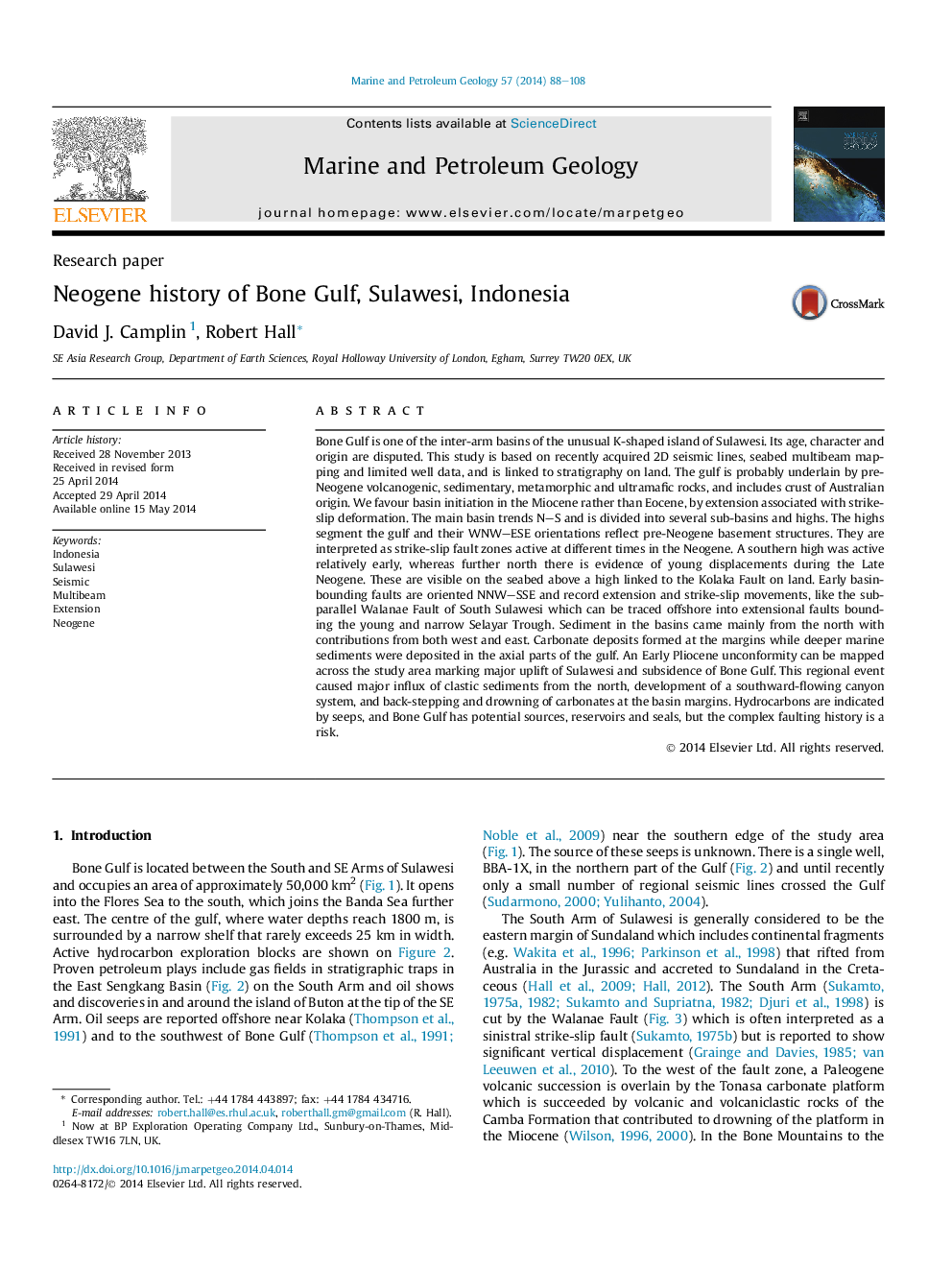| کد مقاله | کد نشریه | سال انتشار | مقاله انگلیسی | نسخه تمام متن |
|---|---|---|---|---|
| 6435333 | 1637167 | 2014 | 21 صفحه PDF | دانلود رایگان |
- Basin origin proposed to be extension associated with strike-slip faulting.
- Basin not underlain by oceanic crust, extension initiated in Miocene not Eocene.
- Early Pliocene major subsidence and formation of central canyon.
- Early Pliocene event correlated with uplift of Sulawesi and major sediment influx.
- All elements of hydrocarbon system but complex faulting history presents major risk.
Bone Gulf is one of the inter-arm basins of the unusual K-shaped island of Sulawesi. Its age, character and origin are disputed. This study is based on recently acquired 2D seismic lines, seabed multibeam mapping and limited well data, and is linked to stratigraphy on land. The gulf is probably underlain by pre-Neogene volcanogenic, sedimentary, metamorphic and ultramafic rocks, and includes crust of Australian origin. We favour basin initiation in the Miocene rather than Eocene, by extension associated with strike-slip deformation. The main basin trends N-S and is divided into several sub-basins and highs. The highs segment the gulf and their WNW-ESE orientations reflect pre-Neogene basement structures. They are interpreted as strike-slip fault zones active at different times in the Neogene. A southern high was active relatively early, whereas further north there is evidence of young displacements during the Late Neogene. These are visible on the seabed above a high linked to the Kolaka Fault on land. Early basin-bounding faults are oriented NNW-SSE and record extension and strike-slip movements, like the sub-parallel Walanae Fault of South Sulawesi which can be traced offshore into extensional faults bounding the young and narrow Selayar Trough. Sediment in the basins came mainly from the north with contributions from both west and east. Carbonate deposits formed at the margins while deeper marine sediments were deposited in the axial parts of the gulf. An Early Pliocene unconformity can be mapped across the study area marking major uplift of Sulawesi and subsidence of Bone Gulf. This regional event caused major influx of clastic sediments from the north, development of a southward-flowing canyon system, and back-stepping and drowning of carbonates at the basin margins. Hydrocarbons are indicated by seeps, and Bone Gulf has potential sources, reservoirs and seals, but the complex faulting history is a risk.
Journal: Marine and Petroleum Geology - Volume 57, November 2014, Pages 88-108
